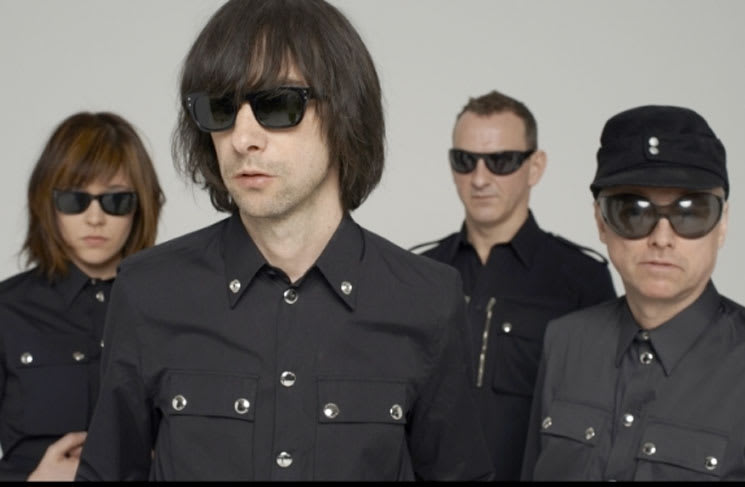There is a great struggle that comes with trying to decide the best work by a band that constantly reinvents itself like Primal Scream have over the last three and a half decades. Over 11 albums, the legendary Scottish band have been chameleonic, delving into everything from C86 indie pop and blissed-out acid house to anarchic cyber punk and gospel straight out of Muscle Shoals. Few would or even could argue over their two best full-lengths — those are set in stone for Scream fans — but after that, it's not so clear.
When they released their debut album in 1987, they were a bunch of puffy shirt-sporting acidheads dreaming of making another Forever Changes. Two years later? MC5-worshipping speed freaks in leather trousers. And in another two years? Ecstasy-popping poster boys who gave the original rave generation its soundtrack. With each ensuing record, they changed their sound and their substance of choice, resulting in a discography that very rarely shows a thread between releases.
Along the way, frontman Bobby Gillespie, co-founder Andrew Innes and long-standing keyboardist Martin Duffy have opened up their band to become a collective that has welcomed some of the most iconic musicians of the last 40 years to join the Scream team. Mani (Stone Roses), Kevin Shields and Debbie Googe (both My Bloody Valentine) have all been members at some point, while the Chemical Brothers, Bernard Sumner (New Order), Robert Plant, the Orb, George Clinton, Andrew Weatherall, David Holmes, Will Sergeant (Echo & the Bunnymen), Alison Mosshart (the Kills, Dead Weather), Josh Homme (Queens of the Stone Age), Lykke Li, Victoria Bergsman (Taken By Trees), Mark Stewart (Pop Group), Jim Reid (Jesus & Mary Chain) and even supermodel Kate Moss have all played their part in helping reshape the Primal Scream sound.
With the release of their 11th album, the newly delivered Chaosmosis, Primal Scream are still evolving. And although it just barely misses the cut of their essential records, it's yet another reminder of how anomalous this band are at this stage in their career.
Essential Albums:
5. More Light
(2013)
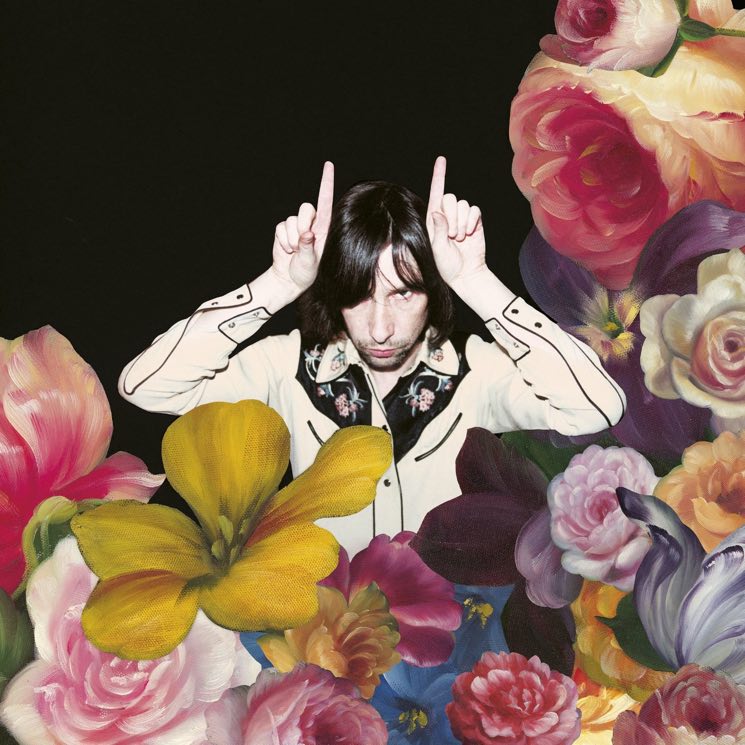
More Light wasn't the Scream's first attempt at writing an ambitious rock record, but it succeeded where overblown efforts like Give Out But Don't Give Up failed magnificently. David Holmes, a mostly electronic producer known for his deep cinematic vision and the film scores for Steven Soderbergh's Oceans trilogy, took the reins and applied his widescreen techniques to the Scream's roughed sketches.
The nine-minute "2013" might have been a demanding way to initiate an album, but at least it's full of Kevin Shields' screaming guitar flares and a honking sax melody. Holmes then conducted members of the Sunlight Orchestra to unleash a blizzard of free jazz on "River of Pain," and Mark Stewart (Pop Group) to inject some freaked-out funk into "Culturecide." The guests didn't stop there — Robert Plant howls over "Elimination Blues" and Davey Henderson of Fire Engines contributes guitar to "Invisible City" — and neither did the ideas: "Relativity" is two songs in one, "Goodbye Johnny" has the toned-down shuffle and enough sax to pass as Leonard Cohen and "Hit Void" was the most propulsive rocker they'd written since "Accelerator."
Holmes proved to be a perfect fit for More Light. His scope rejuvenated a band that had gone silent for five years; the chemistry between producer and band was loud and clear across pretty much all of this sprawling psych record's 68 minutes.
4. Evil Heat
(2002)

Evil Heat was the most diverse Primal Scream release up to that point, thanks to the massive ensemble cast involved. But no contributor was as essential in whittling the album down as My Bloody Valentine's Kevin Shields, who was at the time considered a member. He produced six of the 11 tracks, where he spread his unique signature of layering harmonic noise and "skunk guitar" in a variety of manners, from the swelling walls and fizzy electronics of "Deep Hit of Morning Sun" to the clamorous garage rock of "Skull X."
Up against Shields' barrage of noise was the more subdued production of Two Lone Swordsmen, who chipped in some contrast with blissed-out Krautrock ("Autobahn 66"), strung-out electro-gospel ("Space Blues #2") and a hazy, pulsating take on "Some Velvet Morning," on which Bobby and Kate Moss played Lee and Nancy. At the time, Evil Heat was met with a lukewarm response, but it's appreciated in value over time, sounding as formidable as any of the Scream's catalogue.
3. Vanishing Point
(1997)
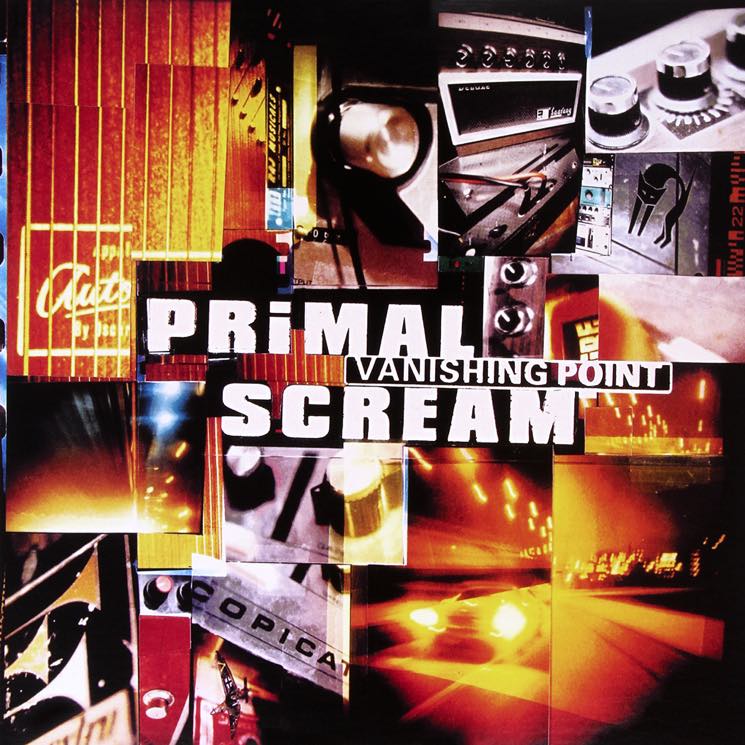
Bouncing back from Give Out But Don't Give Up seemed like a tall order. A disastrous North American tour opening up for Depeche Mode nearly split them up, but a couple of new friends helped keep the band together: best-selling author Irvine Welsh and Stone Roses bassist Mani. Welsh collaborated with the Scream for a one-off single, and got them a gig recording the title track to Trainspotting (an edited version appears here), which foreshadowed the music to follow. Mani, on the other hand, became the band's full-time bassist after the Roses fell apart and appears on a number of the tracks.
Vanishing Point proved to be a renaissance that was almost as significant as the one they'd experienced seven years earlier. Named after and inspired by the 1971 cult film of the same name, Vanishing Point was accurately described by Gillespie as "an anarcho-syndicalist speedfreak road movie record." With such a loose, improvisational approach, the songs recalled the radical flow they experimented with on Screamadelica, but injected with a much darker, more nihilistic vibe (particularly on "Motorhead").
Guests that dropped by the studio included reggae pioneer Augustus Pablo, the Memphis Horns, Sex Pistols' Glen Matlock and Can's Jaki Liebezeit, which inspired all sorts of styles: dub, Krautrock, psychedelia, R&B, garage, punk and industrial. First single "Kowalski" somehow managed to combine all of those, as well as samples from the film into one hard-charging, claustrophobic juggernaut. Perhaps more than ever, Primal Scream were making music that defied any easy categorization. Though they were sandwiched in between the expiring Britpop and burgeoning electronica movements, tracks like "Out of the Void" and "Stuka," a track that foreshadowed the subsequent dub remix album, Echo Dek, primed the band to lead a sonic revolution entirely on their own.
2. XTRMNTR
(2000)
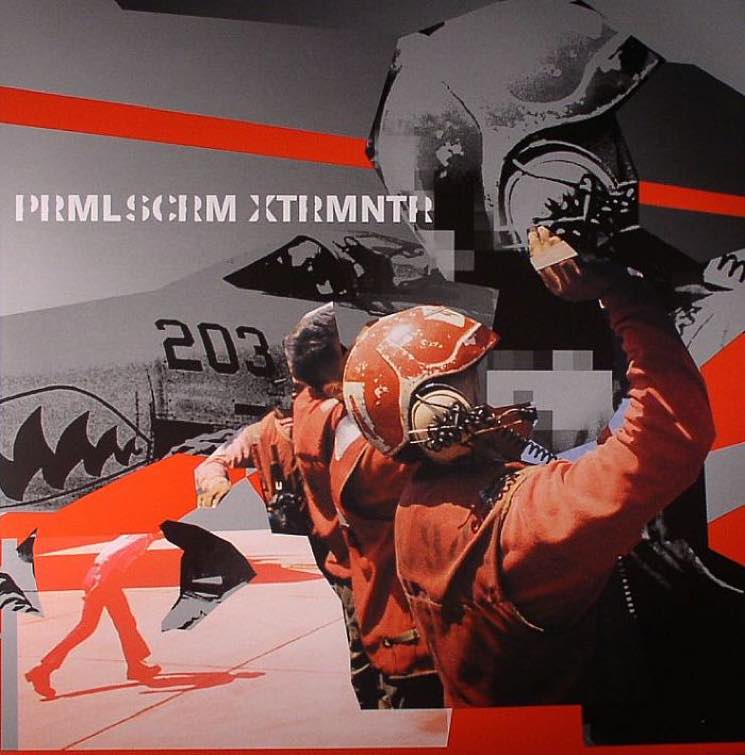
With all of the tension surrounding the turn of the millennium, Primal Scream arrived in 2000 looking to shake things up with an anarchistic manifesto that pushed the dark, experimental leanings of Vanishing Point to their extreme. Hell-bent on establishing an anti-government agenda, Primal Scream were foaming at the mouth and ready to give politicians everywhere an acid bath. To hammer home the message, their fascism-fighting anthem "Swastika Eyes" was featured twice, as both Jagz Kooner's tumbling original mix and the Chemical Brothers' big beat-bolstered remix.
My Bloody Valentine's Kevin Shields added scorching guitar noise to the Stooges-esque barnburner "Accelerator" and reworked Vanishing Point's "If They Move Kill 'Em" into a riotous collage of ricocheting drums and guitar effects. Gillespie even tried his hand at rapping on the disorienting "Insect Royalty" and "Pills," which aren't as cringe-worthy as you'd think; the latter was one of the most extreme things they'd ever done, as Gillespie treads the warpath hocking up a flow of "fuck, fuck, sick, fuck, fuck, sick, fuck." But no matter how severe it got, XTRMNTR finished on an uplifting note with the glimmer of "Shoot Speed/Kill Light," a triumphant slice of drone rock led by New Order's Bernard Sumner on guitar.
1. Screamadelica
(1991)
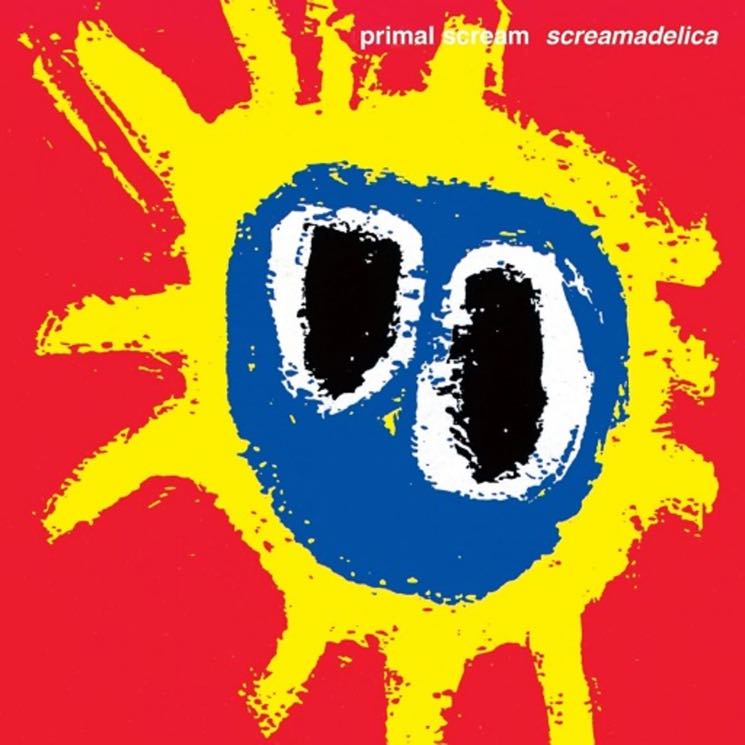
There are many reasons why Screamadelica is indisputably the essential Primal Scream record (some of which you can read about here). It was the most celebrated album of its release year, taking home the inaugural Mercury Prize over U2's Achtung Baby, and gave the band international recognition, eventually selling more than three million units worldwide. It helped define an era, giving a soundtrack to a generation of ravers.
More than anything though, Screamadelica was the moment that Primal Scream went from retro-thieving rockers searching for an identity to discovering and confirming that they were a gang of radical innovators completely changing the game. From beginning to end, Screamadelica is a revelatory experience — be it out of your mind on your narcotic of choice or stone cold sober. The hallucinogenic suggestions were there regardless, on the sitar-studded house makeover of the 13th Floor Elevators' "Slip Inside This House," the flute-piloted ambient cut "Inner Flight" and either version of the chill-out classic "Higher Than the Sun."
Overshadowed by the album's reputation as a full-length to take in as a singular whole is Primal Scream's ability to write some killer anthems, and there are plenty here: the gospel greatness of "Movin' On Up" and "Come Together"; the deep house wobble of "Don't Fight It, Feel It"; the beatific dub of "Higher Than the Sun"; and, of course, the hedonistic rumpus of "Loaded." They were all lifted as singles, with each one acting as an example of the chops this ragged mob of Scots had in writing unique and boundary-pushing pop songs.
What to Avoid:
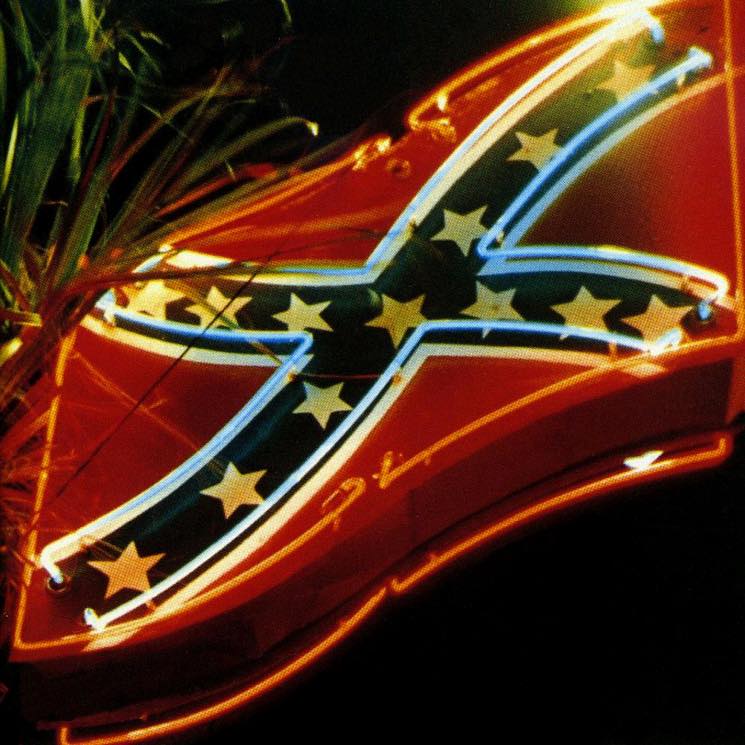
Even if they had opted not to use William Eggleston's controversial snapshot of a neon Confederate flag, Primal Scream's Give Out But Don't Give Up (1994) was a seriously flawed record. As the follow-up to Screamadelica, it was a hugely anticipated release, but any fan content with this foray into such barefaced Stones worship was in the minority. It may have spawned two rousing hits in "Jailbird" and "Rocks," which have become signature songs and still find their way into the band's set lists, but even with George Clinton, the Memphis Horns and the Muscle Shoals rhythm section involved, Give Out was simply a retread of the past, just when everyone was waiting to see what future sounds the band would come up with. Twelve years later they did it again, with the Delta blues-tinged rock'n'roll of 2006's Riot City Blues. As a band who could never really stick with an idea, this move was a complete regression into pastiche — not to mention that a group should only ever have one album in a discography that full-on apes the Rolling Stones.
Of all the band's attempts to become a straight rock band, their sophomore album, Primal Scream (1989), is the most worthy of your attention, even if it's a completely derivative stab at building their own Detroit-circa-1969 rock'n'roll fantasy — no matter how tight their leather trousers got, they couldn't quite shake the fact that they were pretenders. Still, without making "I'm Losing More Than I'll Ever Have," Andrew Weatherall never could have given them "Loaded," and it's hard to knock the wistful glam-lean of "She Power" or a kiss-off ballad like "You're Just Dead Skin To Me."
Further Listening:
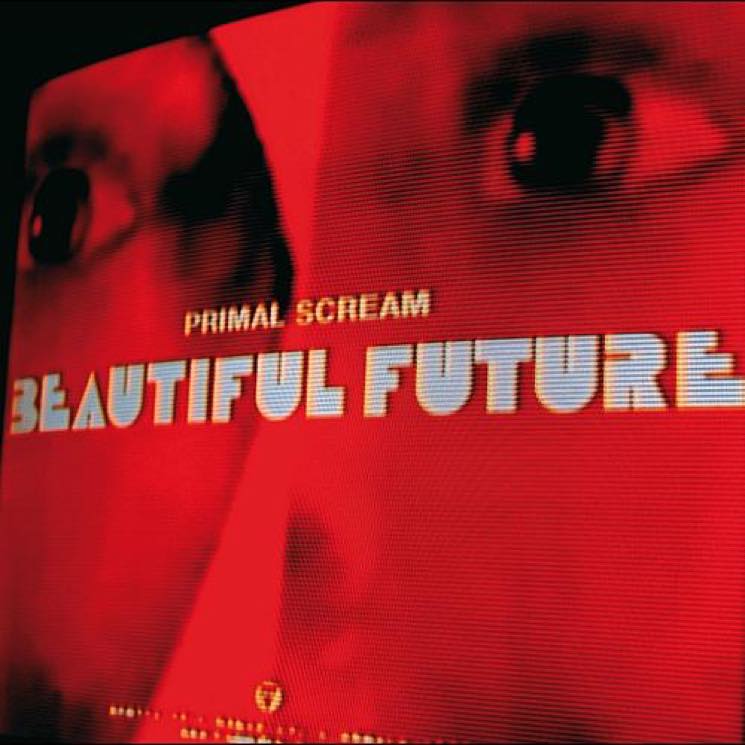
Although sonically it has almost nothing in common with any album that followed, their 1987 debut, Sonic Flower Groove, is probably more respected now than it was back when it was released. At the time, Primal Scream were simply part of the British indie pop pack, Arthur Lee and Byrds obsessives who were lumped in with the C86 scene thanks to their Rickenbacker jangle and fey lyrics. But these songs have been tapped for inspiration a thousand times since by copyists, few of which have managed to write anything as good as "Imperial" or "Sonic Sister Love" (the closest they ever came to sounding like Gillespie's old band, the Jesus & Mary Chain).
Following the disappointing ride into Stones country with Riot City Blues, 2008's Beautiful Future found the band bouncing back with an album that, though a little front-heavy, returned to their genre-hopping future rock sound. Featuring production by Paul Epworth (Adele, Bloc Party) and Bjorn Yttling (Lykke Li, Peter Bjorn & John), the album was a mixed bag of iridescent pop ("Beautiful Future"), strung-out folk (the Linda Thompson-featuring "Over & Over"), disco-soul ("Uptown"), punch-rock anthems ("Can't Go Back," "Necro Hex Blues") and, best of all, a perfect visualization of what a modern Elvis/Bowie collaboration might have been ("Glory of Love").
Primal Scream's latest and 11th album, Chaosmosis, feels more like an extension of Beautiful Future, only better executed. Working with Yttling once again, they set their sights on making a modern pop record with all of the normal Scream trimmings. Inviting current pop stars like HAIM to sing backup, and Sky Ferreira to duet on sparkling dance pop track "Where the Light Gets In" really freshened up their sound, to the point that they might just find themselves back in the Top 40 again. Not bad for a gang of rag-tag 50-somethings.
When they released their debut album in 1987, they were a bunch of puffy shirt-sporting acidheads dreaming of making another Forever Changes. Two years later? MC5-worshipping speed freaks in leather trousers. And in another two years? Ecstasy-popping poster boys who gave the original rave generation its soundtrack. With each ensuing record, they changed their sound and their substance of choice, resulting in a discography that very rarely shows a thread between releases.
Along the way, frontman Bobby Gillespie, co-founder Andrew Innes and long-standing keyboardist Martin Duffy have opened up their band to become a collective that has welcomed some of the most iconic musicians of the last 40 years to join the Scream team. Mani (Stone Roses), Kevin Shields and Debbie Googe (both My Bloody Valentine) have all been members at some point, while the Chemical Brothers, Bernard Sumner (New Order), Robert Plant, the Orb, George Clinton, Andrew Weatherall, David Holmes, Will Sergeant (Echo & the Bunnymen), Alison Mosshart (the Kills, Dead Weather), Josh Homme (Queens of the Stone Age), Lykke Li, Victoria Bergsman (Taken By Trees), Mark Stewart (Pop Group), Jim Reid (Jesus & Mary Chain) and even supermodel Kate Moss have all played their part in helping reshape the Primal Scream sound.
With the release of their 11th album, the newly delivered Chaosmosis, Primal Scream are still evolving. And although it just barely misses the cut of their essential records, it's yet another reminder of how anomalous this band are at this stage in their career.
Essential Albums:
5. More Light
(2013)

More Light wasn't the Scream's first attempt at writing an ambitious rock record, but it succeeded where overblown efforts like Give Out But Don't Give Up failed magnificently. David Holmes, a mostly electronic producer known for his deep cinematic vision and the film scores for Steven Soderbergh's Oceans trilogy, took the reins and applied his widescreen techniques to the Scream's roughed sketches.
The nine-minute "2013" might have been a demanding way to initiate an album, but at least it's full of Kevin Shields' screaming guitar flares and a honking sax melody. Holmes then conducted members of the Sunlight Orchestra to unleash a blizzard of free jazz on "River of Pain," and Mark Stewart (Pop Group) to inject some freaked-out funk into "Culturecide." The guests didn't stop there — Robert Plant howls over "Elimination Blues" and Davey Henderson of Fire Engines contributes guitar to "Invisible City" — and neither did the ideas: "Relativity" is two songs in one, "Goodbye Johnny" has the toned-down shuffle and enough sax to pass as Leonard Cohen and "Hit Void" was the most propulsive rocker they'd written since "Accelerator."
Holmes proved to be a perfect fit for More Light. His scope rejuvenated a band that had gone silent for five years; the chemistry between producer and band was loud and clear across pretty much all of this sprawling psych record's 68 minutes.
4. Evil Heat
(2002)

Evil Heat was the most diverse Primal Scream release up to that point, thanks to the massive ensemble cast involved. But no contributor was as essential in whittling the album down as My Bloody Valentine's Kevin Shields, who was at the time considered a member. He produced six of the 11 tracks, where he spread his unique signature of layering harmonic noise and "skunk guitar" in a variety of manners, from the swelling walls and fizzy electronics of "Deep Hit of Morning Sun" to the clamorous garage rock of "Skull X."
Up against Shields' barrage of noise was the more subdued production of Two Lone Swordsmen, who chipped in some contrast with blissed-out Krautrock ("Autobahn 66"), strung-out electro-gospel ("Space Blues #2") and a hazy, pulsating take on "Some Velvet Morning," on which Bobby and Kate Moss played Lee and Nancy. At the time, Evil Heat was met with a lukewarm response, but it's appreciated in value over time, sounding as formidable as any of the Scream's catalogue.
3. Vanishing Point
(1997)

Bouncing back from Give Out But Don't Give Up seemed like a tall order. A disastrous North American tour opening up for Depeche Mode nearly split them up, but a couple of new friends helped keep the band together: best-selling author Irvine Welsh and Stone Roses bassist Mani. Welsh collaborated with the Scream for a one-off single, and got them a gig recording the title track to Trainspotting (an edited version appears here), which foreshadowed the music to follow. Mani, on the other hand, became the band's full-time bassist after the Roses fell apart and appears on a number of the tracks.
Vanishing Point proved to be a renaissance that was almost as significant as the one they'd experienced seven years earlier. Named after and inspired by the 1971 cult film of the same name, Vanishing Point was accurately described by Gillespie as "an anarcho-syndicalist speedfreak road movie record." With such a loose, improvisational approach, the songs recalled the radical flow they experimented with on Screamadelica, but injected with a much darker, more nihilistic vibe (particularly on "Motorhead").
Guests that dropped by the studio included reggae pioneer Augustus Pablo, the Memphis Horns, Sex Pistols' Glen Matlock and Can's Jaki Liebezeit, which inspired all sorts of styles: dub, Krautrock, psychedelia, R&B, garage, punk and industrial. First single "Kowalski" somehow managed to combine all of those, as well as samples from the film into one hard-charging, claustrophobic juggernaut. Perhaps more than ever, Primal Scream were making music that defied any easy categorization. Though they were sandwiched in between the expiring Britpop and burgeoning electronica movements, tracks like "Out of the Void" and "Stuka," a track that foreshadowed the subsequent dub remix album, Echo Dek, primed the band to lead a sonic revolution entirely on their own.
2. XTRMNTR
(2000)

With all of the tension surrounding the turn of the millennium, Primal Scream arrived in 2000 looking to shake things up with an anarchistic manifesto that pushed the dark, experimental leanings of Vanishing Point to their extreme. Hell-bent on establishing an anti-government agenda, Primal Scream were foaming at the mouth and ready to give politicians everywhere an acid bath. To hammer home the message, their fascism-fighting anthem "Swastika Eyes" was featured twice, as both Jagz Kooner's tumbling original mix and the Chemical Brothers' big beat-bolstered remix.
My Bloody Valentine's Kevin Shields added scorching guitar noise to the Stooges-esque barnburner "Accelerator" and reworked Vanishing Point's "If They Move Kill 'Em" into a riotous collage of ricocheting drums and guitar effects. Gillespie even tried his hand at rapping on the disorienting "Insect Royalty" and "Pills," which aren't as cringe-worthy as you'd think; the latter was one of the most extreme things they'd ever done, as Gillespie treads the warpath hocking up a flow of "fuck, fuck, sick, fuck, fuck, sick, fuck." But no matter how severe it got, XTRMNTR finished on an uplifting note with the glimmer of "Shoot Speed/Kill Light," a triumphant slice of drone rock led by New Order's Bernard Sumner on guitar.
1. Screamadelica
(1991)

There are many reasons why Screamadelica is indisputably the essential Primal Scream record (some of which you can read about here). It was the most celebrated album of its release year, taking home the inaugural Mercury Prize over U2's Achtung Baby, and gave the band international recognition, eventually selling more than three million units worldwide. It helped define an era, giving a soundtrack to a generation of ravers.
More than anything though, Screamadelica was the moment that Primal Scream went from retro-thieving rockers searching for an identity to discovering and confirming that they were a gang of radical innovators completely changing the game. From beginning to end, Screamadelica is a revelatory experience — be it out of your mind on your narcotic of choice or stone cold sober. The hallucinogenic suggestions were there regardless, on the sitar-studded house makeover of the 13th Floor Elevators' "Slip Inside This House," the flute-piloted ambient cut "Inner Flight" and either version of the chill-out classic "Higher Than the Sun."
Overshadowed by the album's reputation as a full-length to take in as a singular whole is Primal Scream's ability to write some killer anthems, and there are plenty here: the gospel greatness of "Movin' On Up" and "Come Together"; the deep house wobble of "Don't Fight It, Feel It"; the beatific dub of "Higher Than the Sun"; and, of course, the hedonistic rumpus of "Loaded." They were all lifted as singles, with each one acting as an example of the chops this ragged mob of Scots had in writing unique and boundary-pushing pop songs.
What to Avoid:

Even if they had opted not to use William Eggleston's controversial snapshot of a neon Confederate flag, Primal Scream's Give Out But Don't Give Up (1994) was a seriously flawed record. As the follow-up to Screamadelica, it was a hugely anticipated release, but any fan content with this foray into such barefaced Stones worship was in the minority. It may have spawned two rousing hits in "Jailbird" and "Rocks," which have become signature songs and still find their way into the band's set lists, but even with George Clinton, the Memphis Horns and the Muscle Shoals rhythm section involved, Give Out was simply a retread of the past, just when everyone was waiting to see what future sounds the band would come up with. Twelve years later they did it again, with the Delta blues-tinged rock'n'roll of 2006's Riot City Blues. As a band who could never really stick with an idea, this move was a complete regression into pastiche — not to mention that a group should only ever have one album in a discography that full-on apes the Rolling Stones.
Of all the band's attempts to become a straight rock band, their sophomore album, Primal Scream (1989), is the most worthy of your attention, even if it's a completely derivative stab at building their own Detroit-circa-1969 rock'n'roll fantasy — no matter how tight their leather trousers got, they couldn't quite shake the fact that they were pretenders. Still, without making "I'm Losing More Than I'll Ever Have," Andrew Weatherall never could have given them "Loaded," and it's hard to knock the wistful glam-lean of "She Power" or a kiss-off ballad like "You're Just Dead Skin To Me."
Further Listening:

Although sonically it has almost nothing in common with any album that followed, their 1987 debut, Sonic Flower Groove, is probably more respected now than it was back when it was released. At the time, Primal Scream were simply part of the British indie pop pack, Arthur Lee and Byrds obsessives who were lumped in with the C86 scene thanks to their Rickenbacker jangle and fey lyrics. But these songs have been tapped for inspiration a thousand times since by copyists, few of which have managed to write anything as good as "Imperial" or "Sonic Sister Love" (the closest they ever came to sounding like Gillespie's old band, the Jesus & Mary Chain).
Following the disappointing ride into Stones country with Riot City Blues, 2008's Beautiful Future found the band bouncing back with an album that, though a little front-heavy, returned to their genre-hopping future rock sound. Featuring production by Paul Epworth (Adele, Bloc Party) and Bjorn Yttling (Lykke Li, Peter Bjorn & John), the album was a mixed bag of iridescent pop ("Beautiful Future"), strung-out folk (the Linda Thompson-featuring "Over & Over"), disco-soul ("Uptown"), punch-rock anthems ("Can't Go Back," "Necro Hex Blues") and, best of all, a perfect visualization of what a modern Elvis/Bowie collaboration might have been ("Glory of Love").
Primal Scream's latest and 11th album, Chaosmosis, feels more like an extension of Beautiful Future, only better executed. Working with Yttling once again, they set their sights on making a modern pop record with all of the normal Scream trimmings. Inviting current pop stars like HAIM to sing backup, and Sky Ferreira to duet on sparkling dance pop track "Where the Light Gets In" really freshened up their sound, to the point that they might just find themselves back in the Top 40 again. Not bad for a gang of rag-tag 50-somethings.
